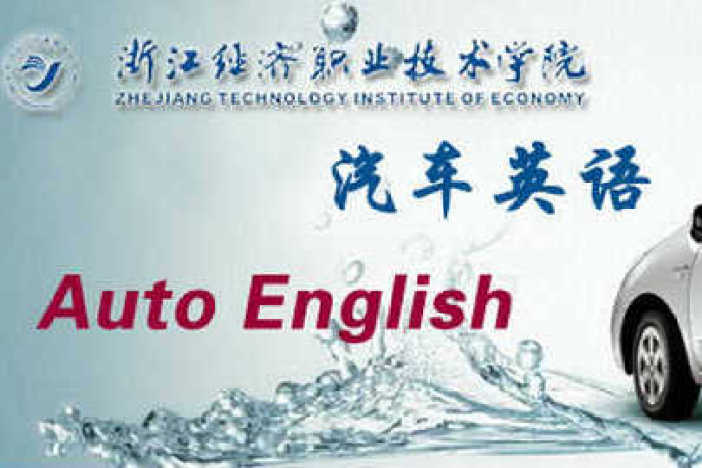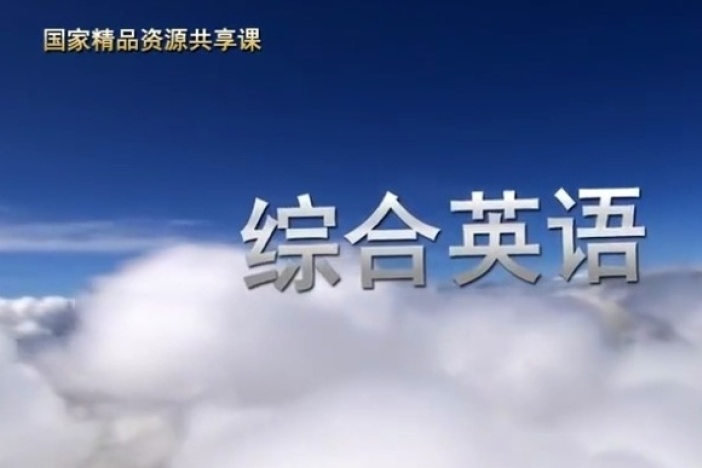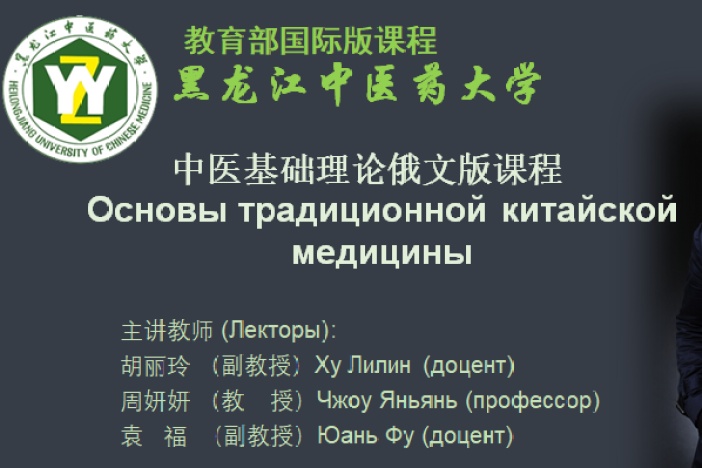收藏
课程目录
1.1 Lead-in
 1.2 Features of International Trade
1.2 Features of International Trade
 1.3 Organizations and Legal Environment of International Trade
1.3 Organizations and Legal Environment of International Trade
 1.4 Three Segments of Export and Import
1.4 Three Segments of Export and Import
 2.1 Lead-in
2.1 Lead-in
 2.2.1 Inquiry and Offer(1)
2.2.1 Inquiry and Offer(1)
 2.2.2 Inquiry and Offer(2)
2.2.2 Inquiry and Offer(2)
 2.2.3 Inquiry and Offer(3)
2.2.3 Inquiry and Offer(3)
 2.3.1 Counteroffer and Acceptance(1)
2.3.1 Counteroffer and Acceptance(1)
 2.3.2 Counteroffer and Acceptance(2)
2.3.2 Counteroffer and Acceptance(2)
 2.3.3 Counteroffer and Acceptance(3)
2.3.3 Counteroffer and Acceptance(3)
 2.3.4 Counteroffer and Acceptance(4)
2.3.4 Counteroffer and Acceptance(4)
 2.4 Conclusion of Contracts
2.4 Conclusion of Contracts
 3.1 Name and Quality
3.1 Name and Quality
 3.2 Quantity
3.2 Quantity
 3.3 Packing
3.3 Packing
 4.1 Lead-in
4.1 Lead-in
 4.2 Rules of Trade Terms
4.2 Rules of Trade Terms
 4.3.1 FOB, CFR and CIF(1)
4.3.1 FOB, CFR and CIF(1)
 4.3.2 FOB, CFR and CIF(2)
4.3.2 FOB, CFR and CIF(2)
 4.3.3 FOB, CFR and CIF(3)
4.3.3 FOB, CFR and CIF(3)
 4.4 FCA, CPT and CIP
4.4 FCA, CPT and CIP
 4.5 Determinants of Price
4.5 Determinants of Price
 5.1 Lead-in
5.1 Lead-in
 5.2.1 Modes of Transport in International Trade(1)
5.2.1 Modes of Transport in International Trade(1)
 5.2.2 Modes of Transport in International Trade(2)
5.2.2 Modes of Transport in International Trade(2)
 5.2.3 Modes of Transport in International Trade(3)
5.2.3 Modes of Transport in International Trade(3)
 5.2.4 Modes of Transport in International Trade(4)
5.2.4 Modes of Transport in International Trade(4)
 5.2.5 Modes of Transport in International Trade(5)
5.2.5 Modes of Transport in International Trade(5)
 5.3.1 Shipping Documents(1)
5.3.1 Shipping Documents(1)
 5.3.2 Shipping Documents(2)
5.3.2 Shipping Documents(2)
 5.3.3 Shipping Documents(3)
5.3.3 Shipping Documents(3)
 5.4.1 Terms of Shipping(1)
5.4.1 Terms of Shipping(1)
 5.4.2 Terms of Shipping(2)
5.4.2 Terms of Shipping(2)
 5.4.3 Terms of Shipping(3)
5.4.3 Terms of Shipping(3)
 5.5.1 Container Shipping in the World and in China(1)
5.5.1 Container Shipping in the World and in China(1)
 5.5.2 Container Shipping in the World and in China(2)
5.5.2 Container Shipping in the World and in China(2)
 5.5.3 Container Shipping in the World and in China(3)
5.5.3 Container Shipping in the World and in China(3)
 5.5.4 Container Shipping in the World and in China(4)
5.5.4 Container Shipping in the World and in China(4)
 6.1.1 Lead-in(1)
6.1.1 Lead-in(1)
 6.1.2 Lead-in(2)
6.1.2 Lead-in(2)
 6.2.1 Risks and Losses in Cargo Transport(1)
6.2.1 Risks and Losses in Cargo Transport(1)
 6.2.2 Risks and Losses in Cargo Transport(2)
6.2.2 Risks and Losses in Cargo Transport(2)
 6.3.1 China Insurance Clauses(1)
6.3.1 China Insurance Clauses(1)
 6.3.2 China Insurance Clauses(2)
6.3.2 China Insurance Clauses(2)
 6.4 Institute Cargo Clauses
6.4 Institute Cargo Clauses
 6.5.1 Insurance Practices in International Trade(1)
6.5.1 Insurance Practices in International Trade(1)
 6.5.2 Insurance Practices in International Trade(2)
6.5.2 Insurance Practices in International Trade(2)
 6.5.3 Insurance Practices in International Trade(3)
6.5.3 Insurance Practices in International Trade(3)
 6.5.4 Insurance Practices in International Trade(4)
6.5.4 Insurance Practices in International Trade(4)
 6.5.5 Insurance Practices in International Trade(5)
6.5.5 Insurance Practices in International Trade(5)
 7.1 Lead-in: Chapter Contents & Check and Promissory Note
7.1 Lead-in: Chapter Contents & Check and Promissory Note
 7.2.1 Bill of Exchange(1)
7.2.1 Bill of Exchange(1)
 7.2.2 Bill of Exchange(2)
7.2.2 Bill of Exchange(2)
 7.2.3 Bill of Exchange(3)
7.2.3 Bill of Exchange(3)
 7.2.4 Bill of Exchange(4)
7.2.4 Bill of Exchange(4)
 7.3.1 Remittance and Collection(1)
7.3.1 Remittance and Collection(1)
 7.3.2 Remittance and Collection(2)
7.3.2 Remittance and Collection(2)
 7.3.3 Remittance and Collection(3)
7.3.3 Remittance and Collection(3)
 7.3.4 Remittance and Collection(4)
7.3.4 Remittance and Collection(4)
 7.3.5 Remittance and Collection(5)
7.3.5 Remittance and Collection(5)
 7.4.1 Credit Part I: Basic Concepts of L/C(1)
7.4.1 Credit Part I: Basic Concepts of L/C(1)
 7.4.2 Credit Part I: Basic Concepts of L/C(2)
7.4.2 Credit Part I: Basic Concepts of L/C(2)
 7.4.3 Credit Part I: Basic Concepts of L/C(3)
7.4.3 Credit Part I: Basic Concepts of L/C(3)
 7.4.4 Credit Part I: Basic Concepts of L/C(4)
7.4.4 Credit Part I: Basic Concepts of L/C(4)
 7.4.5 Credit Part I: Basic Concepts of L/C(5)
7.4.5 Credit Part I: Basic Concepts of L/C(5)
 7.5.1 Credit Part II: Expedition and Amendment of L/C(1)
7.5.1 Credit Part II: Expedition and Amendment of L/C(1)
 7.5.2 Credit Part II: Expedition and Amendment of L/C(2)
7.5.2 Credit Part II: Expedition and Amendment of L/C(2)
 7.5.3 Credit Part II: Expedition and Amendment of L/C(3)
7.5.3 Credit Part II: Expedition and Amendment of L/C(3)
 7.5.4 Credit Part II: Expedition and Amendment of L/C(4)
7.5.4 Credit Part II: Expedition and Amendment of L/C(4)
 7.5.5 Credit Part II: Expedition and Amendment of L/C(5)
7.5.5 Credit Part II: Expedition and Amendment of L/C(5)
 7.5.6 Credit Part II: Expedition and Amendment of L/C(6)
7.5.6 Credit Part II: Expedition and Amendment of L/C(6)
 7.6 Terms of Payment
7.6 Terms of Payment
 8.1 Overview of Contract Implementation
8.1 Overview of Contract Implementation
 8.2 Complying Presentation under L/C
8.2 Complying Presentation under L/C
 8.3.1 Export Documents(1)
8.3.1 Export Documents(1)
 8.3.2 Export Documents(2)
8.3.2 Export Documents(2)
 8.3.3 Export Documents(3)
8.3.3 Export Documents(3)
 8.3.4 Export Documents(4)
8.3.4 Export Documents(4)
 8.3.5 Export Documents(5)
8.3.5 Export Documents(5)
 8.3.6 Export Documents(6)
8.3.6 Export Documents(6)
 8.3.7 Export Documents(7)
8.3.7 Export Documents(7)
 8.3.8 Export Documents(8)
8.3.8 Export Documents(8)
 8.3.9 Export Documents(9)
8.3.9 Export Documents(9)
 9.1.1 Inspection(1)
9.1.1 Inspection(1)
 9.1.2 Inspection(2)
9.1.2 Inspection(2)
 9.2.1 Claim(1)
9.2.1 Claim(1)
 9.2.2 Claim(2)
9.2.2 Claim(2)
 9.3 Force Majeure
9.3 Force Majeure
 9.4.1 Arbitration(1)
9.4.1 Arbitration(1)
 9.4.2 Arbitration(2)
9.4.2 Arbitration(2)
 9.4.3 Arbitration(3)
9.4.3 Arbitration(3)

 1.2 Features of International Trade
1.2 Features of International Trade
 1.3 Organizations and Legal Environment of International Trade
1.3 Organizations and Legal Environment of International Trade
 1.4 Three Segments of Export and Import
1.4 Three Segments of Export and Import
 2.1 Lead-in
2.1 Lead-in
 2.2.1 Inquiry and Offer(1)
2.2.1 Inquiry and Offer(1)
 2.2.2 Inquiry and Offer(2)
2.2.2 Inquiry and Offer(2)
 2.2.3 Inquiry and Offer(3)
2.2.3 Inquiry and Offer(3)
 2.3.1 Counteroffer and Acceptance(1)
2.3.1 Counteroffer and Acceptance(1)
 2.3.2 Counteroffer and Acceptance(2)
2.3.2 Counteroffer and Acceptance(2)
 2.3.3 Counteroffer and Acceptance(3)
2.3.3 Counteroffer and Acceptance(3)
 2.3.4 Counteroffer and Acceptance(4)
2.3.4 Counteroffer and Acceptance(4)
 2.4 Conclusion of Contracts
2.4 Conclusion of Contracts
 3.1 Name and Quality
3.1 Name and Quality
 3.2 Quantity
3.2 Quantity
 3.3 Packing
3.3 Packing
 4.1 Lead-in
4.1 Lead-in
 4.2 Rules of Trade Terms
4.2 Rules of Trade Terms
 4.3.1 FOB, CFR and CIF(1)
4.3.1 FOB, CFR and CIF(1)
 4.3.2 FOB, CFR and CIF(2)
4.3.2 FOB, CFR and CIF(2)
 4.3.3 FOB, CFR and CIF(3)
4.3.3 FOB, CFR and CIF(3)
 4.4 FCA, CPT and CIP
4.4 FCA, CPT and CIP
 4.5 Determinants of Price
4.5 Determinants of Price
 5.1 Lead-in
5.1 Lead-in
 5.2.1 Modes of Transport in International Trade(1)
5.2.1 Modes of Transport in International Trade(1)
 5.2.2 Modes of Transport in International Trade(2)
5.2.2 Modes of Transport in International Trade(2)
 5.2.3 Modes of Transport in International Trade(3)
5.2.3 Modes of Transport in International Trade(3)
 5.2.4 Modes of Transport in International Trade(4)
5.2.4 Modes of Transport in International Trade(4)
 5.2.5 Modes of Transport in International Trade(5)
5.2.5 Modes of Transport in International Trade(5)
 5.3.1 Shipping Documents(1)
5.3.1 Shipping Documents(1)
 5.3.2 Shipping Documents(2)
5.3.2 Shipping Documents(2)
 5.3.3 Shipping Documents(3)
5.3.3 Shipping Documents(3)
 5.4.1 Terms of Shipping(1)
5.4.1 Terms of Shipping(1)
 5.4.2 Terms of Shipping(2)
5.4.2 Terms of Shipping(2)
 5.4.3 Terms of Shipping(3)
5.4.3 Terms of Shipping(3)
 5.5.1 Container Shipping in the World and in China(1)
5.5.1 Container Shipping in the World and in China(1)
 5.5.2 Container Shipping in the World and in China(2)
5.5.2 Container Shipping in the World and in China(2)
 5.5.3 Container Shipping in the World and in China(3)
5.5.3 Container Shipping in the World and in China(3)
 5.5.4 Container Shipping in the World and in China(4)
5.5.4 Container Shipping in the World and in China(4)
 6.1.1 Lead-in(1)
6.1.1 Lead-in(1)
 6.1.2 Lead-in(2)
6.1.2 Lead-in(2)
 6.2.1 Risks and Losses in Cargo Transport(1)
6.2.1 Risks and Losses in Cargo Transport(1)
 6.2.2 Risks and Losses in Cargo Transport(2)
6.2.2 Risks and Losses in Cargo Transport(2)
 6.3.1 China Insurance Clauses(1)
6.3.1 China Insurance Clauses(1)
 6.3.2 China Insurance Clauses(2)
6.3.2 China Insurance Clauses(2)
 6.4 Institute Cargo Clauses
6.4 Institute Cargo Clauses
 6.5.1 Insurance Practices in International Trade(1)
6.5.1 Insurance Practices in International Trade(1)
 6.5.2 Insurance Practices in International Trade(2)
6.5.2 Insurance Practices in International Trade(2)
 6.5.3 Insurance Practices in International Trade(3)
6.5.3 Insurance Practices in International Trade(3)
 6.5.4 Insurance Practices in International Trade(4)
6.5.4 Insurance Practices in International Trade(4)
 6.5.5 Insurance Practices in International Trade(5)
6.5.5 Insurance Practices in International Trade(5)
 7.1 Lead-in: Chapter Contents & Check and Promissory Note
7.1 Lead-in: Chapter Contents & Check and Promissory Note
 7.2.1 Bill of Exchange(1)
7.2.1 Bill of Exchange(1)
 7.2.2 Bill of Exchange(2)
7.2.2 Bill of Exchange(2)
 7.2.3 Bill of Exchange(3)
7.2.3 Bill of Exchange(3)
 7.2.4 Bill of Exchange(4)
7.2.4 Bill of Exchange(4)
 7.3.1 Remittance and Collection(1)
7.3.1 Remittance and Collection(1)
 7.3.2 Remittance and Collection(2)
7.3.2 Remittance and Collection(2)
 7.3.3 Remittance and Collection(3)
7.3.3 Remittance and Collection(3)
 7.3.4 Remittance and Collection(4)
7.3.4 Remittance and Collection(4)
 7.3.5 Remittance and Collection(5)
7.3.5 Remittance and Collection(5)
 7.4.1 Credit Part I: Basic Concepts of L/C(1)
7.4.1 Credit Part I: Basic Concepts of L/C(1)
 7.4.2 Credit Part I: Basic Concepts of L/C(2)
7.4.2 Credit Part I: Basic Concepts of L/C(2)
 7.4.3 Credit Part I: Basic Concepts of L/C(3)
7.4.3 Credit Part I: Basic Concepts of L/C(3)
 7.4.4 Credit Part I: Basic Concepts of L/C(4)
7.4.4 Credit Part I: Basic Concepts of L/C(4)
 7.4.5 Credit Part I: Basic Concepts of L/C(5)
7.4.5 Credit Part I: Basic Concepts of L/C(5)
 7.5.1 Credit Part II: Expedition and Amendment of L/C(1)
7.5.1 Credit Part II: Expedition and Amendment of L/C(1)
 7.5.2 Credit Part II: Expedition and Amendment of L/C(2)
7.5.2 Credit Part II: Expedition and Amendment of L/C(2)
 7.5.3 Credit Part II: Expedition and Amendment of L/C(3)
7.5.3 Credit Part II: Expedition and Amendment of L/C(3)
 7.5.4 Credit Part II: Expedition and Amendment of L/C(4)
7.5.4 Credit Part II: Expedition and Amendment of L/C(4)
 7.5.5 Credit Part II: Expedition and Amendment of L/C(5)
7.5.5 Credit Part II: Expedition and Amendment of L/C(5)
 7.5.6 Credit Part II: Expedition and Amendment of L/C(6)
7.5.6 Credit Part II: Expedition and Amendment of L/C(6)
 7.6 Terms of Payment
7.6 Terms of Payment
 8.1 Overview of Contract Implementation
8.1 Overview of Contract Implementation
 8.2 Complying Presentation under L/C
8.2 Complying Presentation under L/C
 8.3.1 Export Documents(1)
8.3.1 Export Documents(1)
 8.3.2 Export Documents(2)
8.3.2 Export Documents(2)
 8.3.3 Export Documents(3)
8.3.3 Export Documents(3)
 8.3.4 Export Documents(4)
8.3.4 Export Documents(4)
 8.3.5 Export Documents(5)
8.3.5 Export Documents(5)
 8.3.6 Export Documents(6)
8.3.6 Export Documents(6)
 8.3.7 Export Documents(7)
8.3.7 Export Documents(7)
 8.3.8 Export Documents(8)
8.3.8 Export Documents(8)
 8.3.9 Export Documents(9)
8.3.9 Export Documents(9)
 9.1.1 Inspection(1)
9.1.1 Inspection(1)
 9.1.2 Inspection(2)
9.1.2 Inspection(2)
 9.2.1 Claim(1)
9.2.1 Claim(1)
 9.2.2 Claim(2)
9.2.2 Claim(2)
 9.3 Force Majeure
9.3 Force Majeure
 9.4.1 Arbitration(1)
9.4.1 Arbitration(1)
 9.4.2 Arbitration(2)
9.4.2 Arbitration(2)
 9.4.3 Arbitration(3)
9.4.3 Arbitration(3)

课程详情
本课程以国际货物贸易为对象,以惯例和法律为依据,联系实际介绍合同订立、商品价格构成、国际货物运输与保险、国际结算、国际贸易争议的预防与解决等内容。(南京财经大学)
本课程以国际货物贸易为对象,以惯例和法律为依据,联系实际介绍合同订立、商品价格构成、国际货物运输与保险、国际结算、国际贸易争议的预防与解决等内容。(南京财经大学)
本课程以国际货物贸易为对象,以惯例和法律为依据,联系实际介绍合同订立、商品价格构成、国际货物运输与保险、国际结算、国际贸易争议的预防与解决等内容。(南京财经大学)












